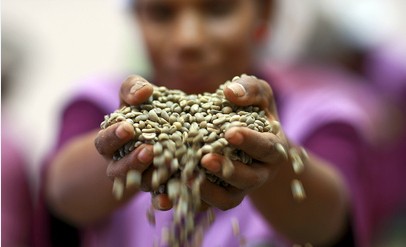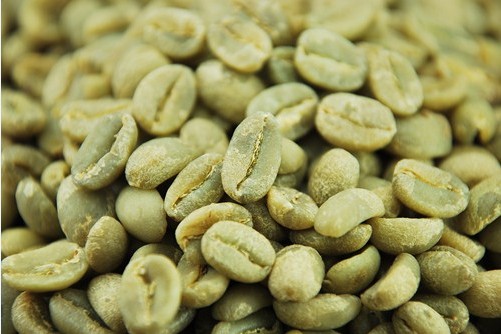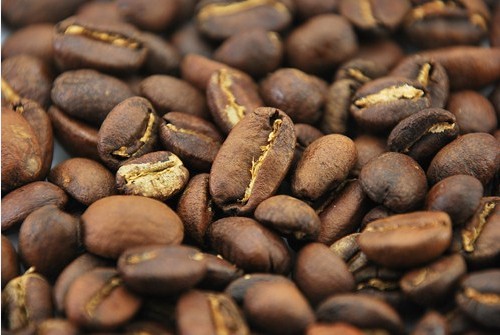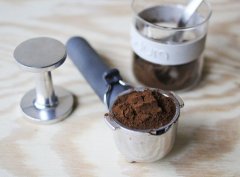The following are the most commonly used packaging methods for the storage of raw coffee beans

Until recent years, all coffee beans were packed in gunny bags, transported in containers, and could not reach the roasters until a few months after the beans were processed. If roasters and importers occasionally want to test coffee beans from their origin, or taste "pre-shipment samples", they will receive coffee beans that have been damaged by the poor atmospheric environment during storage or transportation.
Over the past decade, some small, quality-oriented bakers have tried to change the way raw beans are packed and transported. Many baking companies, even the smallest, now buy coffee beans directly from growers, share information on cup tests and bean ratings with farmers, and use faster transportation. and specially designed packaging to preserve the freshness and quality of beans. These packages will be expensive, but these freight charges are reasonable given that the price of boutique coffee continues to rise.
Here are the most commonly used packaging methods:
Sacks are the most commonly used and economical option for packaging and transporting raw beans. Jute is a renewable resource, and sacks are cheap and do not require special skills or equipment beyond the capacity of ordinary mills and export points. However, sacks cannot insulate the moisture from the stench, so the coffee beans transferred are easily damaged during storage and transportation.
Vacuum packaging is the best way to package raw beans. Vacuum bags can insulate raw beans from moisture, odor and oxygen, and greatly slow down the breathing process, thus slowing down the aging process of coffee beans. Before putting raw beans into vacuum bags, pay close attention to the water activity of beans to avoid mildew during storage. Vacuum packaging costs nearly $0.15-0.25 per pound (0.45-0.75 euros per kilogram) and requires special machinery and skills, often delaying the delivery of raw beans, so this approach is cost-free and risk-free.

Sacks and other sealed bags can insulate raw beans from moisture and odor, and are cheaper and more convenient than vacuum bags. The protection time of raw beans in grain bags is much longer than that in gunny bags, but it is half of that in vacuum bags. The cost of grain bag packaging is 0.05-0.10 US dollars per pound (0.15-0.30 euro per kilogram), so grain bags are the most practical and best choice for quality-conscious bakers. Like real packaging, pay close attention to the water activity of raw beans before putting them in a grain bag to avoid mildew or microbes during storage.
Frozen storage-put the raw beans in a vacuum bag and store them in an environment below 0 °C (32 °F). This method can preserve the flavor of the coffee beans for several years. Some roasters freeze a large number of boutique coffee beans for several years and call them retro coffee beans, but the current market demand for the beans is still small. It is surprising that cold storage can preserve the flavor of five-year-old raw beans as well as one-month raw beans, but it is still too expensive and some people even think it is wasteful. However, in some high-temperature areas, freezing is still a good way to consider, because most raw beans will be damaged after a few days in extremely hot environment.
No matter which method the baker chooses, action should be taken to ensure that the warehouse has a stable storage environment throughout the year. In an extremely hot or humid environment, the quality of raw beans will be affected by storing raw beans higher above the ground, where the temperature may be higher than expected, or where raw beans are stored too close to the roaster.
Seasonality

In recent years, some roasters have emphasized that they only offer coffee beans that are "in season". Like many other concepts in the coffee industry, there is no agreed definition of seasonality. Some people think that only the recently picked raw beans can be regarded as seasonal, while others are less strict in defining the picking time of seasonal raw beans.
Here is a definition proposed by Ryan Brown, a professional raw bean buyer: "We focus on seasonality because we focus on coffee quality. As long as this cup of coffee tastes fresh, can reflect its acidity, and does not have any sign of 'old', then beans can be called seasonal, it is as simple as that.
Important Notice :
前街咖啡 FrontStreet Coffee has moved to new addredd:
FrontStreet Coffee Address: 315,Donghua East Road,GuangZhou
Tel:020 38364473
- Prev

Espresso espresso how to make a perfect Espresso
A high-quality Espresso espresso has the power to have a good day. When you put pressure on the little coffee pressed powder, you are actually going through a delicate process. If you choose freshly roasted and high-quality coffee beans, you only need to remember the following steps to capture the essence, or you can also make a perfect espresso. Grinding degree
- Next

Do you believe the main reason why coffee is getting worse?
Deterioration refers to the change in which the properties of polymers are reduced and cannot be recovered. Due to the action of heat, light, ultraviolet light, oxygen, ozone and various chemicals, polymer materials will change their physical or chemical properties, such as discoloration, cracking, intensity reduction and so on. These external conditions can cause the breakage or cross-linking of the polymer main chain, resulting in structural changes and reduced properties. Baked coffee
Related
- Detailed explanation of Jadeite planting Land in Panamanian Jadeite Manor introduction to the grading system of Jadeite competitive bidding, Red bid, Green bid and Rose Summer
- Story of Coffee planting in Brenka region of Costa Rica Stonehenge Manor anaerobic heavy honey treatment of flavor mouth
- What's on the barrel of Blue Mountain Coffee beans?
- Can American coffee also pull flowers? How to use hot American style to pull out a good-looking pattern?
- Can you make a cold extract with coffee beans? What is the right proportion for cold-extracted coffee formula?
- Indonesian PWN Gold Mandrine Coffee Origin Features Flavor How to Chong? Mandolin coffee is American.
- A brief introduction to the flavor characteristics of Brazilian yellow bourbon coffee beans
- What is the effect of different water quality on the flavor of cold-extracted coffee? What kind of water is best for brewing coffee?
- Why do you think of Rose Summer whenever you mention Panamanian coffee?
- Introduction to the characteristics of authentic blue mountain coffee bean producing areas? What is the CIB Coffee Authority in Jamaica?

